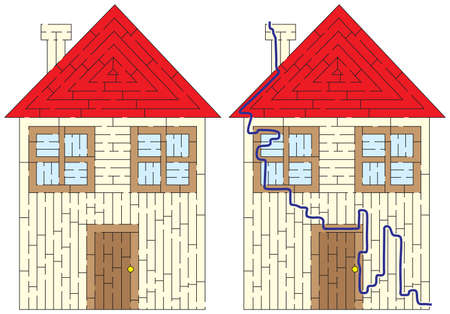Overview of Leasehold and Freehold Property
In the UK property market, understanding the distinction between leasehold and freehold ownership is crucial for any prospective buyer. These two forms of property tenure carry different legal implications, rights, and responsibilities that can significantly affect your investment and long-term enjoyment of the property.
At its core, freehold means you own both the property and the land it stands on outright. Ownership is perpetual, and you have full control over the property (subject to planning permissions and relevant regulations). In contrast, leasehold indicates that you own the property for a fixed period as specified in a lease agreement, but not the land itself. The land remains under the ownership of the freeholder (or landlord), and once the lease expires, ownership of the property reverts back to them unless extended or renewed.
| Aspect | Freehold | Leasehold |
|---|---|---|
| Ownership Duration | Indefinite (perpetual) | Fixed term (e.g., 99 or 125 years) |
| Land Ownership | Yes | No (owned by freeholder) |
| Control & Responsibility | Full (subject to laws/regulations) | Limited; subject to lease terms and possible ground rent/service charges |
| Renewal/Extension Needed? | No | Yes, as lease runs down towards expiry |
| Most Common For | Houses | Flats/apartments |
This fundamental legal distinction informs every stage of the property transaction process in England and Wales, influencing everything from price negotiations to future saleability. As such, it is essential that buyers are fully aware of these differences before proceeding with any purchase.
2. Legal Rights and Obligations
Understanding the legal rights and obligations attached to leasehold and freehold property is fundamental for any UK buyer. The distinction between these two forms of ownership shapes everything from your control over the property to your ongoing responsibilities and costs. Below is a detailed comparison of the entitlements and duties each type of owner faces, particularly in relation to maintenance and insurance.
Ownership and Control
| Leaseholder | Freeholder | |
|---|---|---|
| Legal Title | Holds the right to occupy and use the property for a fixed term (often 99 or 125 years) | Owns both the property and the land it stands on indefinitely |
| Control Over Property | Subject to lease terms; must obtain landlord’s consent for significant alterations | Full autonomy to alter, extend, or develop (subject to planning permission) |
Maintenance Responsibilities
| Leaseholder | Freeholder | |
|---|---|---|
| Internal Maintenance | Responsible for internal repairs (e.g., plumbing, electrics within flat) | Responsible for all maintenance, both internal and external |
| External & Structural Maintenance | The freeholder (landlord) generally maintains structure, roof, communal areas; costs often recovered through service charges | Bears full responsibility for structural upkeep and external repairs |
Insurance Duties
| Leaseholder | Freeholder | |
|---|---|---|
| Building Insurance | Arranged by freeholder; leaseholders reimburse via service charge | Bears responsibility for arranging and paying building insurance directly |
| Contents Insurance | Individually arranged by leaseholder for personal possessions | Individually arranged by freeholder as occupier/owner |
Pitfalls and Protections for Buyers
It is crucial to review the lease agreement or title deeds carefully during conveyancing. Leaseholders should scrutinise clauses relating to service charges, repair obligations, and restrictions on use. Freeholders, meanwhile, must be aware that they shoulder all maintenance costs but enjoy greater freedom over their property. Understanding these legal differences ensures buyers make informed decisions aligned with their expectations and long-term plans.
![]()
3. Length of Ownership and Reversion
One of the most crucial legal distinctions between leasehold and freehold properties in the UK lies in the duration of ownership and what happens when that period ends. Understanding these differences is essential for any buyer navigating the British property market.
Outline of Lease Terms
Leasehold properties are owned for a fixed period, typically ranging from 99 to 999 years at inception. The leaseholder has the right to occupy and use the property during this term, but does not own the land itself. Once the lease expires, legal ownership of the property reverts to the freeholder, unless an extension or renewal is negotiated.
| Ownership Type | Length of Ownership | What Happens at End of Term? |
|---|---|---|
| Freehold | Indefinite (perpetual) | Remains with owner and their heirs |
| Leasehold | Fixed term (e.g., 125 years) | Reverts to freeholder upon expiry |
The Concept of Reversion
The reversion principle means that once a lease runs out, all rights to the property revert back to the freeholder. This can significantly impact resale values as a lease gets shorter—mortgage lenders may be reluctant to lend on leases with less than 70–80 years remaining, making it harder to sell or remortgage such properties.
Ground Rent: A Practical Consideration
Most leaseholders are required to pay ground rent—a fee paid annually to the freeholder for occupying their land. Ground rents can be fixed or escalating, and recent legislative reforms have sought to restrict unfairly high or escalating ground rents on new leases. However, existing leases may still carry onerous terms, which buyers must carefully review before committing.
Key Implications for UK Buyers
- Lease length impacts value: Properties with short leases may require costly extensions.
- Lender requirements: Mortgage providers often insist on a minimum lease length.
- Reversion risk: Failure to extend a lease could result in loss of property rights upon expiry.
- Ground rent liabilities: Escalating ground rents can become financially burdensome over time.
This legal framework makes it imperative for UK buyers to conduct thorough due diligence regarding lease terms, ground rent obligations, and potential reversion scenarios before entering into any transaction involving leasehold property.
4. Service Charges and Fees
One of the most significant legal and financial differences between leasehold and freehold ownership in the UK is the range of ongoing costs typically associated with leasehold properties. Understanding these fees is crucial for any prospective buyer, as they can impact both affordability and long-term value.
Common Leasehold Costs
Leasehold properties often come with a variety of regular charges imposed by the freeholder or managing agent. These may include service charges, ground rent, and administration fees, each with their own legal implications and calculation methods. The table below highlights the key differences:
| Type of Cost | Description | Typical Frequency | Who Pays? |
|---|---|---|---|
| Service Charges | Covers maintenance of communal areas (e.g., hallways, gardens), building insurance, repairs, and management fees. | Annually or Quarterly | Leaseholder |
| Ground Rent | A fixed sum paid to the freeholder as part of the lease agreement. Amounts vary depending on lease terms. | Annually (most common) | Leaseholder |
| Administration Fees | Charged for paperwork such as approvals for alterations or providing information during sales. | As required | Leaseholder |
| Major Works Contributions | Occasional large payments towards significant works (e.g., roof replacement). | Ad hoc/When necessary | Leaseholder |
Legal Considerations and Disputes
The law requires that service charges must be reasonable, and leaseholders have rights to challenge excessive costs at the First-tier Tribunal (Property Chamber). Recent legislative reforms are also restricting ground rent on new leases in England and Wales to nominal amounts (“peppercorn” rent) under the Leasehold Reform (Ground Rent) Act 2022.
Comparison with Freehold Properties
Freeholders generally do not pay service charges or ground rent. However, they remain responsible for all maintenance costs, which can be unpredictable but are controlled directly by the owner. In contrast, leaseholders must budget for recurring fees, some of which can rise substantially over time.
Key Takeaway for Buyers
If you are considering a leasehold property in the UK, it is vital to review the terms of the lease carefully and seek legal advice on your potential liabilities. Understanding all associated charges will help you make an informed decision and avoid unexpected financial commitments.
5. Buying and Selling: Legal Considerations
When navigating property transactions in the UK, buyers must understand the distinct legal processes associated with leasehold and freehold properties. The key transaction points, due diligence requirements, conveyancing steps, and lender criteria can vary significantly between these two ownership types.
Key Transaction Points
The table below highlights essential differences to consider during a purchase or sale:
| Aspect | Leasehold | Freehold |
|---|---|---|
| Due Diligence | Review of lease terms, ground rent obligations, service charges, restrictions on use, remaining lease term, and landlord’s consent for alterations or subletting. | Title investigation focuses mainly on boundaries, rights of way, covenants, and absence of encumbrances. |
| Conveyancing Process | Involves communication with the freeholder/management company for management packs and responses to Leasehold Property Enquiries (LPE1). Typically more complex and time-consuming. | Simpler process as there is no superior interest; fewer parties involved and generally faster completion. |
| Lender Requirements | Banks scrutinise remaining lease term (typically requiring at least 80 years left), ground rent escalation clauses, and service charge accounts. Certain leases may be deemed “unmortgageable.” | Lenders focus on standard title checks; fewer restrictions unless specific issues are identified with the property’s title or history. |
Practical Implications During Transaction
- Leasehold Buyers: Must factor in potential delays when management companies are slow to respond. It is also vital to review lease documents for onerous terms that could affect resale value or mortgage eligibility.
- Freehold Buyers: Enjoy a more straightforward process but should not overlook checks for restrictive covenants or boundary disputes that might impact future use.
Lender Due Diligence: Common Pitfalls
Lenders take a cautious approach towards leaseholds with short leases or escalating ground rents. If you are buying leasehold, ensure your solicitor flags any clauses that might make the property unmortgageable or less attractive to future buyers.
Summary Checklist for Buyers and Sellers
- Confirm property type early in negotiations.
- If leasehold, obtain full details of the lease and all related costs upfront.
- Engage a conveyancer with relevant experience in either leasehold or freehold transactions as appropriate.
- Consult your mortgage broker about lender-specific concerns before making an offer.
- Factor in all transaction timelines—leasehold deals typically require more time due to third-party involvement.
6. Common Legal Challenges and Recent Reforms
Understanding the practical legal challenges associated with leasehold and freehold properties is essential for UK buyers. Each tenure presents distinct risks, and recent legislative reforms have sought to address longstanding issues, especially in the leasehold sector.
Typical Disputes and Pitfalls for Buyers
| Issue | Leasehold | Freehold |
|---|---|---|
| Service Charges & Ground Rent | Frequent disputes over excessive or unclear charges; ground rent escalation clauses can create financial uncertainty. | Generally not applicable; owners manage their own maintenance costs. |
| Permission for Alterations | Leaseholders often require landlord consent for alterations, leading to delays or refusals. | No need for third-party permission unless subject to restrictive covenants. |
| Lease Extension/Enfranchisement | Short leases reduce property value; extending a lease can be costly and complex. | Not applicable as ownership is permanent. |
| Disputes with Neighbours/Management Companies | Common in blocks of flats, especially regarding communal areas and services. | Occasional boundary disputes, but fewer shared responsibilities. |
Recent Legal Reforms Affecting Leasehold and Freehold Ownership
The UK government has recognised significant consumer protection concerns within the leasehold sector. Notable reforms include:
- The Leasehold Reform (Ground Rent) Act 2022: This legislation abolished ground rent for most new residential long leases, curbing escalating costs for future buyers.
- Proposed Abolition of Leaseholds on New Houses: The government has announced plans to ban the sale of new houses as leasehold, except in exceptional circumstances, aiming to make all new houses freehold as standard.
- Simplification of Lease Extension Process: Ongoing proposals seek to make lease extensions cheaper and more straightforward for existing leaseholders, reducing legal complexity and cost barriers.
- Right to Manage and Enfranchisement Reform: Measures are being considered to enhance the ability of flat owners to collectively purchase their building’s freehold or take over management functions from landlords.
Pitfalls Despite Reforms
While these reforms signal progress, buyers should remain vigilant. Legacy issues—such as short leases or onerous historic ground rent clauses—may still affect older properties. Due diligence and specialist legal advice remain crucial at every stage of the transaction process. For those purchasing freehold properties, it is also vital to review title deeds for restrictive covenants or shared access agreements that could limit future use or enjoyment of the property.
Conclusion: Informed Decision-Making is Key
The distinction between leasehold and freehold remains a cornerstone of UK property law. While reforms offer enhanced protection—particularly for leaseholders—buyers must understand both the current legal landscape and potential risks inherent in each tenure type. Engaging an experienced solicitor early in the process will help identify red flags, avoid costly disputes, and ensure your investment is protected under evolving UK property law.


